What’s the relationship between CR2032 and CR2016?
CR STANDARD
Just like other batteries in the CR series, CR2016 and CR2032 are button batteries that seem very similar in many respects. By comparing the CR2032 and CR2016, we’ll see if the two are interchangeable, and what their differences are. The CR2016 and CR2032 are both small single-cell batteries with a squat cylinder shape. Here we will compare the main specs, voltage, thickness, chemistry, and other features of CR2032 and CR2016 batteries. These two button cells are very similar. For instance, they have the same diameter of 20 mm, so they can fit in the same device battery compartment. Nevertheless, some differences exist between the two.

CR2032 vs CR2016 – What is the Difference Between These Batteries
- CR2016 Overview
- CR2032 Overview
- CR2016 VS CR2032: Diameter
- CR2016 VS CR2032: Depth
- CR2016 VS CR2032: Application
- CR2016 VS CR2032: Operating Temperature
- CR2016 VS CR2032: Weight
- CR2016 VS CR2032: Voltage
- CR2016 VS CR2032: Capacity
- CR2016 VS CR2032: Comparison Table
- CR2016 VS CR2032: Rechargeability
- The relationship between CR2016 and CR2032
- CR2016 Safety Issues
- CR2016 VS CR2032: Datasheet
CR2016 Overview
The CR2016 lithium coin cell is a primary lithium battery with a voltage of 3V. The CR2016 lithium coin cell is a 3V Lithium battery with a long shelf life for back up energy, great temperature resistance, and superior storage capacity. This lithium coin cell battery has a high energy density, durability, and stability, as well as long battery life in a variety of applications.
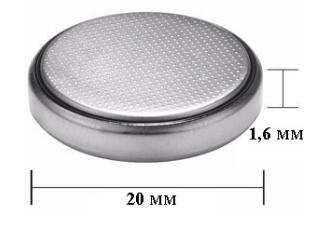
CR2032 Overview
The CR2032 battery is a non-rechargeable (primary) battery that is very common today. It is a coin-cell battery that utilizes lithium chemistry. These batteries are used in a wide range of applications and are available from many retailers.
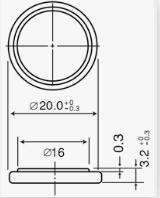
CR2016 VS CR2032: Diameter
The duo of CR2016 and CR2032 batteries have the same diameter of 20mm. The first two numbers of the battery name ‘20’ stand for the diameter.
CR2016 VS CR2032: Depth
Depth is the only visual difference between these 2016 and 2032 batteries. The CR2016 battery has 1.6mm and the CR2032 battery has 3.2mm. The last two numbers of the battery names such as ‘16’ and ‘32’ stand for their respective depth.
CR2016 VS CR2032: Application
CR2016 Application
CR2016 power supplies have demonstrated their worth and are used more frequently than other power supplies with similar dimensions. The CR2016 battery is used in a wide variety of devices and applications including Watches, Calculators, PC notebooks, Electronic keys, Card-type radios, IC cards, Memory cards, Medical equipment, and CMOS memory backups.
CR2032 Application
The CR2032 battery is used in a wide variety of devices and applications including computer motherboards, car key fobs, watches, calculators, PDAs, electronic organizers, garage door openers, toys, games, door chimes, pet collars, LED lights, sporting goods, pedometers, calorie counters, stopwatches, and medical devices.
CR2016 VS CR2032: Operating Temperature
Each of the CR2016 and 2032 CMOS batteries works properly under the temperature range of 0°C to 60°C. But the range varies from battery to battery of different brands. If the operating temperature goes beyond the standard range, the battery will lose its capacity and the device will start malfunctioning or not work at all.
CR2016 VS CR2032: Weight
The weight of the CMOS batteries also varies with their depth. For CR2016, the weight is 2.3gram and for CR2032, the weight is 3.1gram.
CR2016 VS CR2032: Voltage
The nominal voltage for both the 2032 and 2016 CMOS batteries is the same, which is 3V. Because of this shared feature, both of the batteries can act as a replacement for another one.
CR2016 VS CR2032: Capacity
Capacity is one of the main differences between the CR2025 and CR2032 batteries. The 2032 CMOS battery offers more capacity which is 225 mAh. On the other hand, the 2016 CMOS battery capacity is only 90 mAh.
CR2016 VS CR2032: Comparison Table
| CR2032 | CR2016 | |
| Nominal Voltage | 3 Volts | 3 Volts |
| Capacity | 225 mAh | 90 mAh |
| Operating Temperature | 0°C ~ 60°C | 0°C ~ 60°C |
| Height: | 3.2mm | 1.6mm |
| Width (Diameter) | 20mm | 20mm |
| Chemistry | Lithium Coin | Lithium Coin |
| Weight | 3.1g | 1.7g |
CR2016 VS CR2032: Rechargeability
None of the 2032 and 2016 CMOS batteries are separately rechargeable. They only get charged via laptop while it is plugged in.
The relationship between CR2016 and CR2032
CR2016 and CR2032 may vary in thickness, but they are identical in several ways.
They're both 3-volt versions, and none of them is rechargeable. However, it is important to remember that there are variations in ability. CR 2032 has a capacity of 240 mAh, while CR2016 has a capacity of just 90mAh. The CR2032 can provide 10 hours of use, while you only get about six hours from the CR2016, depending on the power you're using, of course.
Due to their equivalent voltage, there are several cases where CR2016 and CR2032 can be interchanged. However, the fact that they have different capacities and therefore different run times can cause problems. You will not get the power from the CR2016 that you will get from the CR2032, and some devices won't function at all.
CR2016 Safety Issues
Modern CR2016, BR2016, and LiR2016 batteries are made using no lead, cadmium, and similar heavy metals, but, they are nonetheless dangerous when swallowed.
With 20mm diameter, they are not easy to swallow, but just in case, keep them away from kids and pets. And if something like that happens, call emergency services right away.
Although they don't contain heavy elements, they can cause electrolytic reactions in the body that may be very harmful.
Fortunately, most CR2016 and similar batteries come in 'children safe' packages, making them generally inaccessible to children. IMHO, a very determined kid with scissors can open even such packages...
CR2016 VS CR2032: Datasheet
Are all CR2016 batteries the same?
Although all CR2016 batteries feature the same chemistry and physical dimensions, they may differ in actual capacity, discharge features, self-discharge rate, operating temperature range, and similar.
What is the difference between a CR2032 and a CR2016 battery?
The main difference is the height (3.2 vs 1.6 mm), capacity, and drain currents.
What battery can replace CR2016?
Lithium 3.0V batteries that are labeled as ECR2016, DL2016, E-CR2016, SB-T11, 5000LC and similar can replace CR2016 batteries since they are different labels for the same battery - CR2016 battery.
What are CR2016 batteries used for?
CR2016 batteries are used for digital watches, credit-card size devices, remote controls, calculators, thermometers, Bluetooth sets, wearable electronics, CMOS memory, key chain LED flashlights, etc.
What Uses a CR2032 Battery?
The CR2032 battery is used in a wide variety of devices and applications including computer motherboards, car key fobs, watches, calculators, PDAs, electronic organizers, garage door openers, toys, games, door chimes, pet collars, LED lights, sporting goods, pedometers, calorie counters, stopwatches, and medical devices.
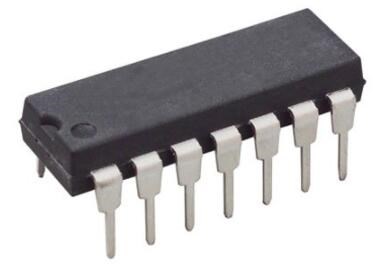 74LS73 Dual JK Flip-Flop IC: Datasheet, Pinout and How Do Flip Flops Work
74LS73 Dual JK Flip-Flop IC: Datasheet, Pinout and How Do Flip Flops Work07 December 202122836
 LM7812 Positive Voltage Regulators: Specifications, Pinout and Datasheet
LM7812 Positive Voltage Regulators: Specifications, Pinout and Datasheet13 August 202116791
 A Comprehensive Guide to LTC6802IG-2#3ZZPBF Battery Management PMIC
A Comprehensive Guide to LTC6802IG-2#3ZZPBF Battery Management PMIC06 March 2024118
![A General Introduction to BMX055 [Faq]](https://res.utmel.com/Images/Article/d62f1040-06a8-4a63-aaf9-208b94cf45a1.jpg) A General Introduction to BMX055 [Faq]
A General Introduction to BMX055 [Faq]20 April 20221415
 Texas Instruments TMUX1574RSVR: Steps to Solve Common Issues
Texas Instruments TMUX1574RSVR: Steps to Solve Common Issues16 August 2025176
 TMC5160 vs. TMC2209: How to Differentiate?
TMC5160 vs. TMC2209: How to Differentiate?18 April 202218765
 LM324N Operational Amplifiers: Pinout, Datasheet and Features
LM324N Operational Amplifiers: Pinout, Datasheet and Features05 July 202119986
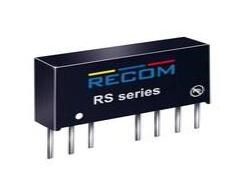 RS-1205S Regulated Converter: Pinout, Features, Circuit
RS-1205S Regulated Converter: Pinout, Features, Circuit26 July 20211412
 What Makes Tube and Solid-State Audio Amplifiers Different
What Makes Tube and Solid-State Audio Amplifiers Different14 July 2025504
 What Are Buck-Boost Converters?
What Are Buck-Boost Converters?07 June 2025395
 Structure and Working Principle of Field Effect Transistors
Structure and Working Principle of Field Effect Transistors07 April 202535727
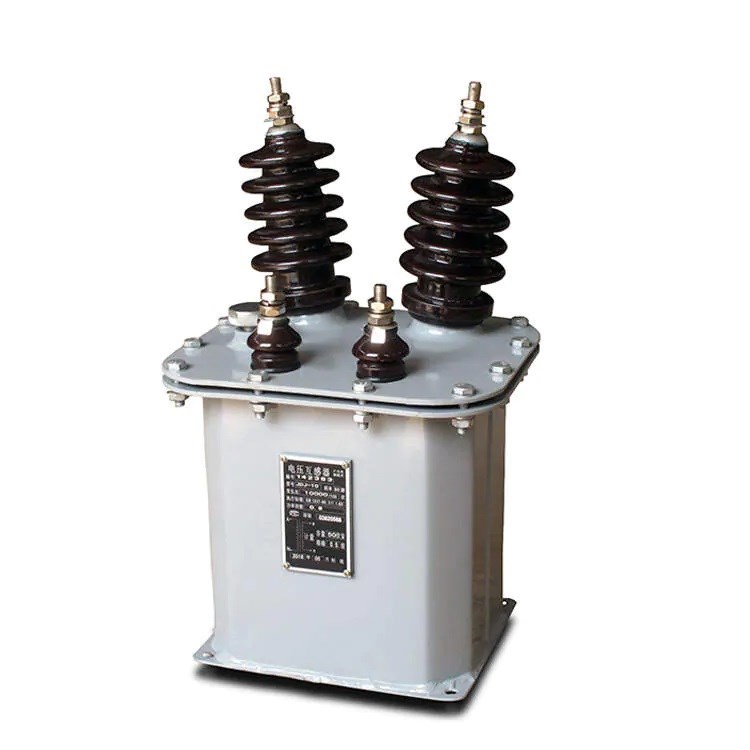 Introduction to Potential Transformers
Introduction to Potential Transformers21 September 20208534
 What is 4G Router?
What is 4G Router?27 September 20215231
 What is a Digital Integrated Circuit and How Do We Use It?
What is a Digital Integrated Circuit and How Do We Use It?20 October 202517056
 What is Tantalum Capacitor: Structure, Failure and Application Guide
What is Tantalum Capacitor: Structure, Failure and Application Guide14 April 202218684
 Intel CEO Reiterates: 2024 Will Achieve Process Leadership
Intel CEO Reiterates: 2024 Will Achieve Process Leadership05 May 20221102
Murata Electronics
In Stock
United States
China
Canada
Japan
Russia
Germany
United Kingdom
Singapore
Italy
Hong Kong(China)
Taiwan(China)
France
Korea
Mexico
Netherlands
Malaysia
Austria
Spain
Switzerland
Poland
Thailand
Vietnam
India
United Arab Emirates
Afghanistan
Åland Islands
Albania
Algeria
American Samoa
Andorra
Angola
Anguilla
Antigua & Barbuda
Argentina
Armenia
Aruba
Australia
Azerbaijan
Bahamas
Bahrain
Bangladesh
Barbados
Belarus
Belgium
Belize
Benin
Bermuda
Bhutan
Bolivia
Bonaire, Sint Eustatius and Saba
Bosnia & Herzegovina
Botswana
Brazil
British Indian Ocean Territory
British Virgin Islands
Brunei
Bulgaria
Burkina Faso
Burundi
Cabo Verde
Cambodia
Cameroon
Cayman Islands
Central African Republic
Chad
Chile
Christmas Island
Cocos (Keeling) Islands
Colombia
Comoros
Congo
Congo (DRC)
Cook Islands
Costa Rica
Côte d’Ivoire
Croatia
Cuba
Curaçao
Cyprus
Czechia
Denmark
Djibouti
Dominica
Dominican Republic
Ecuador
Egypt
El Salvador
Equatorial Guinea
Eritrea
Estonia
Eswatini
Ethiopia
Falkland Islands
Faroe Islands
Fiji
Finland
French Guiana
French Polynesia
Gabon
Gambia
Georgia
Ghana
Gibraltar
Greece
Greenland
Grenada
Guadeloupe
Guam
Guatemala
Guernsey
Guinea
Guinea-Bissau
Guyana
Haiti
Honduras
Hungary
Iceland
Indonesia
Iran
Iraq
Ireland
Isle of Man
Israel
Jamaica
Jersey
Jordan
Kazakhstan
Kenya
Kiribati
Kosovo
Kuwait
Kyrgyzstan
Laos
Latvia
Lebanon
Lesotho
Liberia
Libya
Liechtenstein
Lithuania
Luxembourg
Macao(China)
Madagascar
Malawi
Maldives
Mali
Malta
Marshall Islands
Martinique
Mauritania
Mauritius
Mayotte
Micronesia
Moldova
Monaco
Mongolia
Montenegro
Montserrat
Morocco
Mozambique
Myanmar
Namibia
Nauru
Nepal
New Caledonia
New Zealand
Nicaragua
Niger
Nigeria
Niue
Norfolk Island
North Korea
North Macedonia
Northern Mariana Islands
Norway
Oman
Pakistan
Palau
Palestinian Authority
Panama
Papua New Guinea
Paraguay
Peru
Philippines
Pitcairn Islands
Portugal
Puerto Rico
Qatar
Réunion
Romania
Rwanda
Samoa
San Marino
São Tomé & Príncipe
Saudi Arabia
Senegal
Serbia
Seychelles
Sierra Leone
Sint Maarten
Slovakia
Slovenia
Solomon Islands
Somalia
South Africa
South Sudan
Sri Lanka
St Helena, Ascension, Tristan da Cunha
St. Barthélemy
St. Kitts & Nevis
St. Lucia
St. Martin
St. Pierre & Miquelon
St. Vincent & Grenadines
Sudan
Suriname
Svalbard & Jan Mayen
Sweden
Syria
Tajikistan
Tanzania
Timor-Leste
Togo
Tokelau
Tonga
Trinidad & Tobago
Tunisia
Turkey
Turkmenistan
Turks & Caicos Islands
Tuvalu
U.S. Outlying Islands
U.S. Virgin Islands
Uganda
Ukraine
Uruguay
Uzbekistan
Vanuatu
Vatican City
Venezuela
Wallis & Futuna
Yemen
Zambia
Zimbabwe












